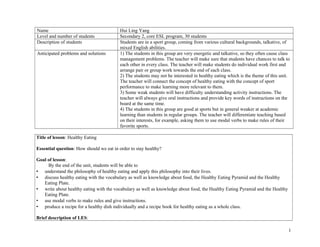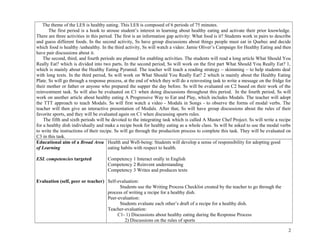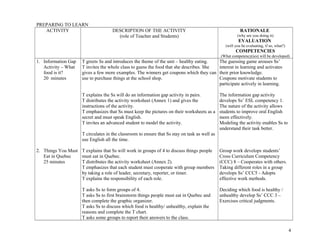1) The lesson aims to teach 30 secondary ESL students about healthy eating through a 6-period unit.
2) Activities include reading texts and videos about nutrition, discussing food choices in groups, and writing recipes using modal verbs.
3) Students will apply their knowledge by writing messages evaluating family meals and creating a class recipe book using modal verbs.









